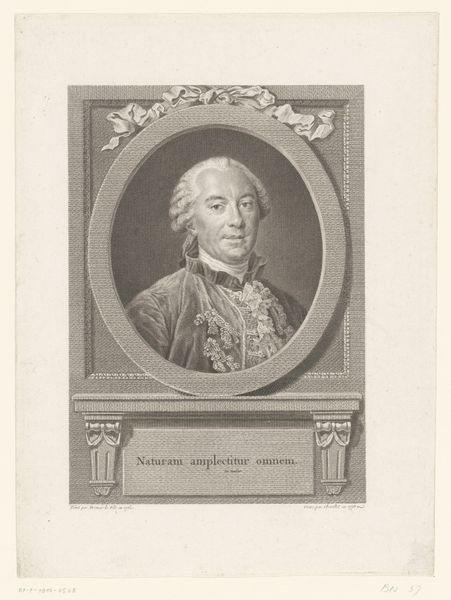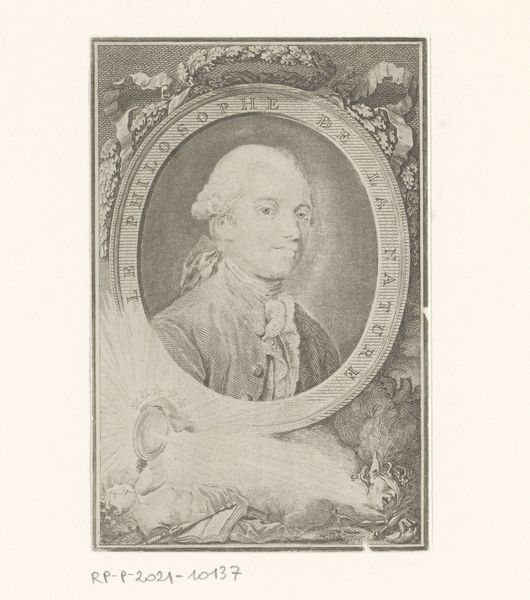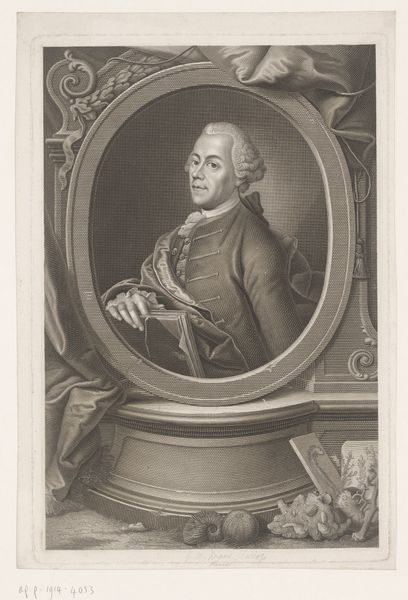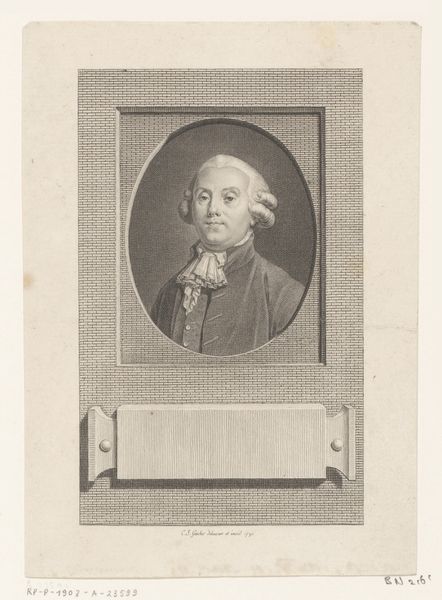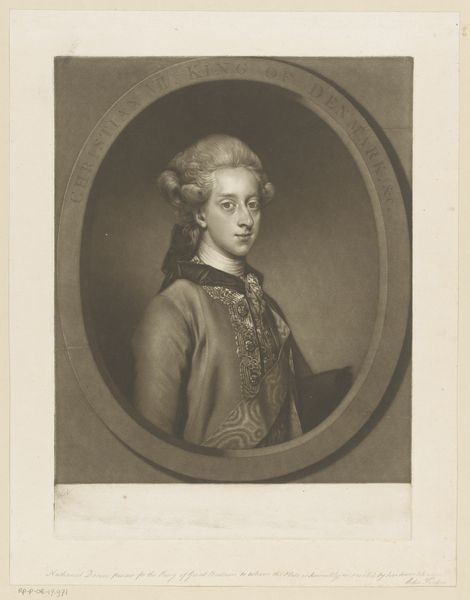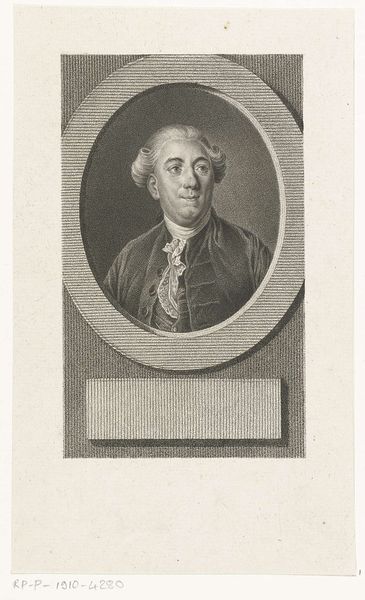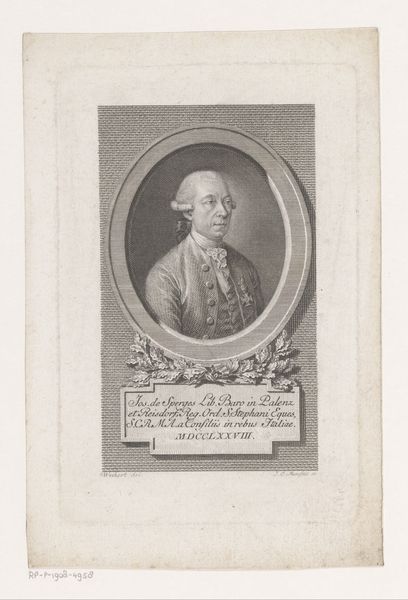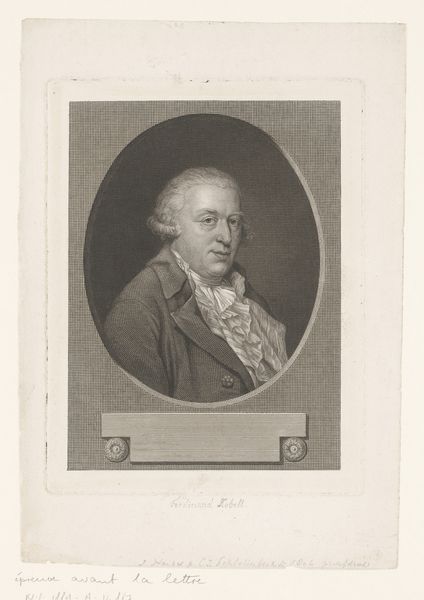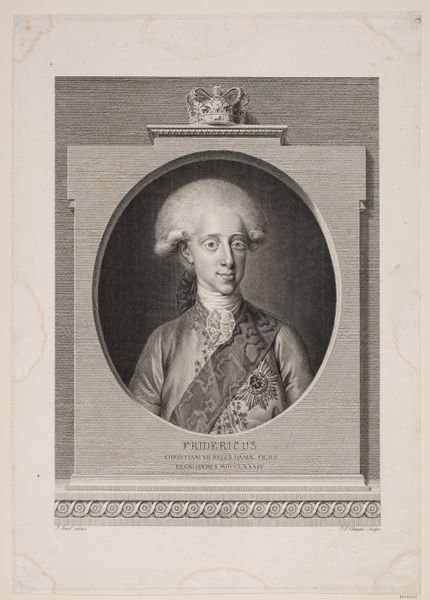
Dimensions: height 326 mm, width 227 mm
Copyright: Rijks Museum: Open Domain
Curator: Looking at this print, I'm immediately struck by the opulence, almost theatrical quality of the composition. The rich fur, the elegant coat. It's as if we're capturing a fleeting moment of grandeur. Editor: Indeed. What we're observing here is a print titled *Portret van Charles Leviez*, crafted around 1763 by James McArdell. It’s an etching and engraving, now held at the Rijksmuseum. I'd say this exemplifies Baroque portraiture; though we often see that term applied to painting. This era placed significant importance on status and representation, particularly in portraiture, a kind of marketing of the self. Curator: Absolutely, that desire for the sitter to exude power, prestige. Fur cloaks historically carry heavy symbolism relating to wealth and societal stature. Here, he isn't simply keeping warm; the fur announces something significant about Leviez. Do we know much about him? Editor: Less about the sitter, but much about the culture of the print. Consider its dissemination. Prints like these democratized access to aristocratic images; it allowed a wider audience to "own" a piece of this world, albeit in a replicated format. This proliferation shaped political opinions and trends, allowing ideas to spread widely. Curator: That dissemination also touches on identity and ideals. A man presented this way became a figure of aspiration for the upwardly mobile. It also cements that period's artistic visual rhetoric—certain colors, poses, items became part of the era's symbolic language. Take his gaze; a sidelong glance projects intelligence, a calculated confidence. It invites interpretation and engagement, much more interesting than a direct, forward-facing stare. Editor: Precisely! The print also served as a kind of promotional tool for the artist. McArdell showcased his mastery of etching and engraving, attracting commissions, which themselves reflect socio-economic power dynamics of that period. How artists maneuvered their careers and established themselves depended upon their ability to access wealth. Curator: The contrast is also important—the starkness of the background versus the figure itself, which keeps your eye from wandering. And thinking about it, we’re still fascinated by such visual proclamations of social standing, though it manifests differently today. It says a lot about our own continued, complex relationship with imagery and power. Editor: It certainly does, and with cultural memory, continuously negotiating its impact. Each generation reinterprets these images through new prisms, granting it lasting relevance.
Comments
No comments
Be the first to comment and join the conversation on the ultimate creative platform.
